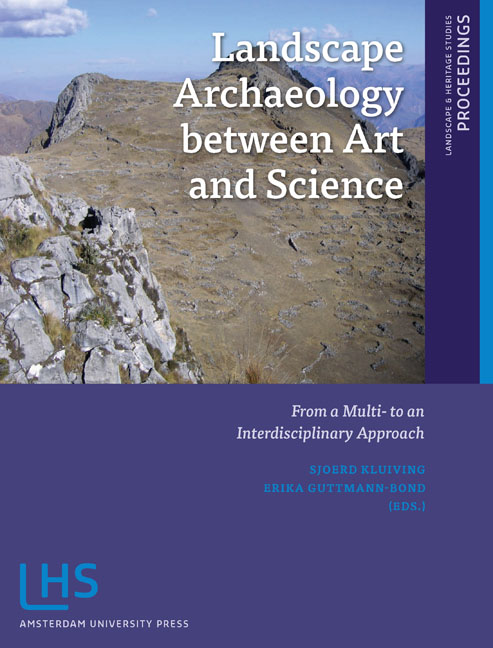Book contents
- Frontmatter
- Contents
- Preface
- Introduction: LAC2010: First International Landscape Archaeology Conference
- THEME 1 HOW DID LANDSCAPE CHANGE?
- THEME II IMPROVING TEMPORAL, CHRONOLOGICAL AND TRANSFORMATIONAL FRAMEWORKS
- THEME III LINKING LANDSCAPES OF LOWLANDS TO MOUNTAINOUS AREAS
- THEME IV APPLYING CONCEPTS OF SCALE
- THEME V NEW DIRECTIONS IN DIGITAL PROSPECTION AND MODELLING TECHNIQUES
- THEME VI HOW WILL LANDSCAPE ARCHAEOLOGY DEVELOP IN THE FUTURE?
- Miscellaneous Endmatter
2.3 - Can the period of Dolmens Construction be seen in the pollen Record? Pollen Analytical Investigations of Holocene Settlement and Vegetation History in the Westensee area, Schleswig-Holstein, Germany
Published online by Cambridge University Press: 21 January 2021
- Frontmatter
- Contents
- Preface
- Introduction: LAC2010: First International Landscape Archaeology Conference
- THEME 1 HOW DID LANDSCAPE CHANGE?
- THEME II IMPROVING TEMPORAL, CHRONOLOGICAL AND TRANSFORMATIONAL FRAMEWORKS
- THEME III LINKING LANDSCAPES OF LOWLANDS TO MOUNTAINOUS AREAS
- THEME IV APPLYING CONCEPTS OF SCALE
- THEME V NEW DIRECTIONS IN DIGITAL PROSPECTION AND MODELLING TECHNIQUES
- THEME VI HOW WILL LANDSCAPE ARCHAEOLOGY DEVELOP IN THE FUTURE?
- Miscellaneous Endmatter
Summary
ABSTRACT
This study focuses on the high-resolution reconstruction of land use and forest history and the changes of vegetation connected to the erection and use of megalithic graves at Krähenberg in Schleswig-Holstein, Northern Germany. Pollen analysis of a peat core from a small mire directly neighbouring the graves was performed in connection with the analysis of archaeological data. A chronological framework is provided by 14C AMS radiocarbon dating. Analysis of known archaeological records using GIS-technique provides information of the intensity and time periods of human activities in the study area. The megaliths in close vicinity of the investigated mire present a clearly visible evidence of anthropogenic use during the middle Neolithic. The pollen diagram shows the vegetation development of the study site from the end of the Atlantic, Subboreal and early Subatlantic period. A small forest opening is suggested around 3500 BC, possibly in connection with the construction of the megaliths, but there is no strong evidence of considerable woodland clearances. The archaeological data indicate that human impact in the area took place during the Neolithic, the Bronze Age and Iron Age, which is corroborated by the pollen record, suggesting that human impact in the study area occurred periodically from the end of the Atlantic period, with an increasing intensity during the Bronze Age.
KEY WORDS
Pollen analysis, Neolithic, megalithic graves, human impact, Schleswig-Holstein
INTRODUCTION
In the prehistory of northern Europe megalithic graves belong to the most remarkable and mysterious structures. The time of their construction, as well as their function and role in the development of human culture are intensely discussed topics not only in archaeology, but also in the natural sciences, dealing with the impacts of human activities on the landscape. The boulders pertaining to the megalithic structures in the study area potentially yield information on their geological age and origin, but they do not provide evidence of when or by whom the structures were erected nor their possible function. In archaeology, the question of dating megalithic structures to a particular Neolithic cultural period can be done by characteristic finds (Müller 1997), which are potentially related to different cultures.
- Type
- Chapter
- Information
- Landscape Archaeology between Art and ScienceFrom a Multi- to an Interdisciplinary Approach, pp. 197 - 210Publisher: Amsterdam University PressPrint publication year: 2012



